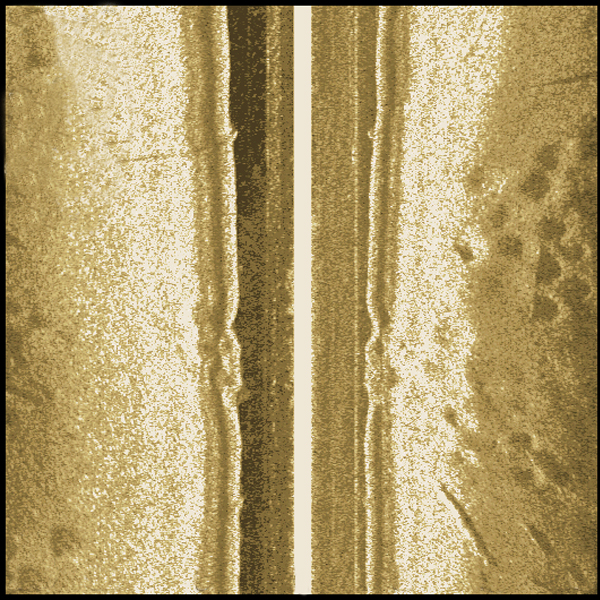Scanning for bream eaters

Often overlooked by anglers, deep bream beds are big-bass magnets according to Walmart FLW Tour pros Scott Suggs and Troy Morrow. Bream bedding activity starts in late April across the South and recurs in monthly waves, peaking with the full moon. Tournament and weekend anglers alike can capitalize on this unique monthly opportunity at clear-water impoundments such as Lanier, Murray, Ouachita, Eufaula and Neely Henry.
“When bream start bedding, they set up their beds just outside of the weedline,” explains Suggs, the Folgers pro. “As summer progresses, the weedlines advance deeper and so does the bedding activity. The very first wave of beds will be in less than 7 feet of water. By mid-August, they can be 26 feet or deeper.”
“The fishing is all in the timing,” adds Morrow. “Bream spawn on the full moon through midsummer, and it often comes into play during the warm-water tournaments.”
Morrow and Suggs break down their bream-bed strategies to help you capitalize on the bite this season.

StructureScan strategy
Suggs and Morrow note that when the monthly spawn hits July, fishing is best. Bream beds are indistinguishable from the surface, but can be located with sonar. They utilize Lowrance StructureScan technology to pinpoint beds sandwiched between the outside weedline and the thermocline. Bed clusters appear as dimples, like on a golf ball, when bream construct their beds on sand and gravel substrates.
“It’s really amazing what you can find with StructureScan,” Suggs says. “In the past few years, I have found beds that I would have never located before. I used to focus only on areas surrounding weedline points and irregularities. Now, I scan entire flats for isolated clusters of beds.”
“I look around both points and within pockets, scanning sandy bottoms for multiple beds,” Morrow says. “The number can vary – sometimes there are five or six; other times 30 or 40 – but all of the bedding areas have great potential in attracting large bass.”

How to fish
After locating active areas, Morrow maintains a healthy distance from the bream beds and targets bass cruising the perimeter.
“Bass generally hold there, using one edge more than the others,” he says. “Once you find a productive edge, try to reproduce that cast.”
Return casts can also provoke reaction strikes from curious bass that move in to investigate the ensuing chaos.
Morrow utilizes two primary lures for triggering bass into striking: a 1/2-ounce jig tipped with a Zoom Super Chunk and a Carolina-rigged Zoom Brush Hog. When presenting both lures, he utilizes a steady retrieve, maintaining contact with the bottom throughout.
Suggs mimics erratic movements of bed-protecting bream by dragging and intermittently jerking a heavier 3/4- to 1-ounce football jig, similar to stroking a jig. He tips his jig with either a twin-tail grub or Zoom Super Fluke Jr. He also relies on a Texas-rigged worm to quickly assess bream activity and to pick off aggressive bass.
Both anglers rely on a diverse color pallet for their lures, selecting a mix of green pumpkin, purple, red and orange hues. The wide range of colors, they feel, adequately represents spawning bream.
Benefits of bream
The benefit of exploiting bedding bream is obvious – anglers can expect to tangle with larger-than-average bass and occasional giants. The tradeoff, however, is that a successful pursuit requires patience and persistence.
“I’ll admit that it gets frustrating fishing several areas in a row without a bite, but once you find the right one, it’s amazing how productive it can be,” Suggs says. “I’ve caught fish up to 10 pounds around bream beds.”
“It is a pattern that definitely produces larger-than-average bass,” adds Morrow. “If you’re on a lake that normally produces 20-pound winning sacks, you can catch a limit of 5- and 6-pounders if the timing is right.”